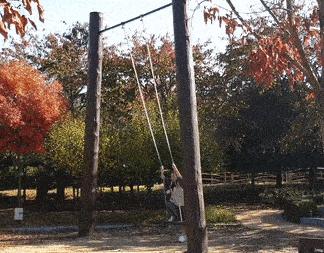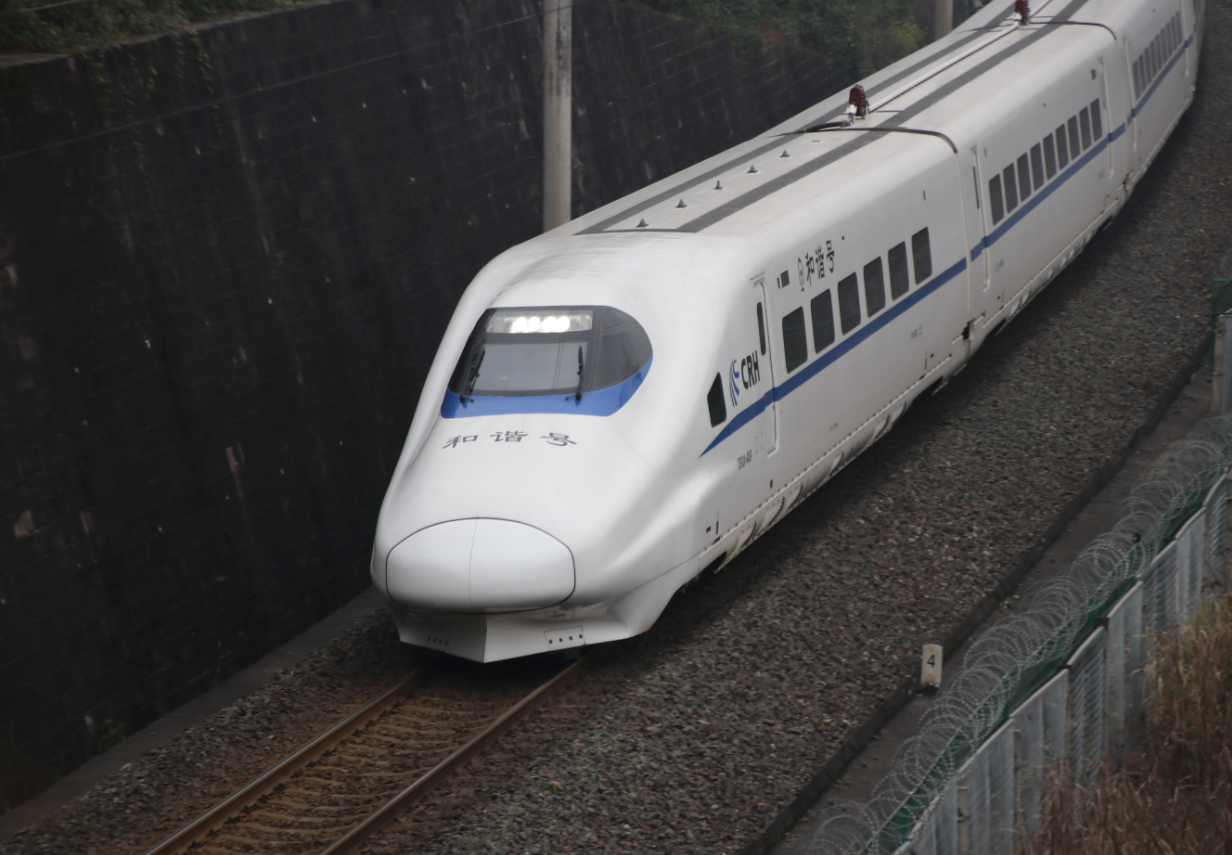Mechanics: Identify, describe and apply principles of mechanical energy
Unit 1: Introduction to mechanical energy
Linda Pretorius
Unit outcomes
By the end of this unit you will be able to:
- Define mechanical energy.
- Define kinetic energy.
- Define gravitational potential energy.
- Calculate kinetic energy ([latex]\scriptsize {{E}_{\text{K}}}=\displaystyle \frac{1}{2}m{{v}^{2}}[/latex]).
- Calculate gravitational potential energy ([latex]\scriptsize {{E}_{\text{P}}}=mgh[/latex]).
Introduction
In this unit[1] you will learn about two forms of mechanical energy, in other words energy an object has due to its position or movement. You will also understand how to calculate the amount of energy an object has at different times due to its position or movement.
The concept of mechanical energy
All objects have energy. is the ability of an object to do . Energy is a scalar quantity and is measured in joules (J).
In physics, work is the term used to describe what is achieved when a force is applied to an object to make it move through some distance. In other words, the force applied to the object leads to a change in either the velocity or the position of the object.
When work is done on an object, energy is transferred. A moving object has the ability to do work on another object it comes into contact with. The energy – in other words, the ability to do work – associated with a moving object is called . An object can also have the ability to do work because of its position or state relative to another object. This type of energy is called .
It follows from these two definitions that is the sum of an object’s kinetic energy and its potential energy: [latex]\scriptsize {{E}_{\text{M}}}={{E}_{\text{K}}}+{{E}_{\text{P}}}[/latex].
Activity 1.1: Think about energy
Time required: 5 minutes
What you need:
- You do not need any additional resources for this activity. However, if you want to watch a swinging action, you will need:
- an internet connection
- a phone with a QR scanner

What to do:
Think about someone on a swing.
- How can the person start the swinging action?
- What happens when the swing reaches the top of its path?
- At what point along the path is the swing moving fastest?
- What keeps the swing moving forward and back?
What did you find?
When someone sits or stands on a swing and wants to set it in motion, a force has to be applied. For example, someone has to push the person on the swing forward (or pull the swing back) or the person has to push off against the ground themselves. When the force is applied, work is being done on the person on the swing. This means energy is being transferred to the person on the swing. The amount of energy transferred to the person on the swing determines how far the swing will rise and how fast it will go.
When the swing reaches its highest point in a cycle, it swings back through the starting position and moves upwards again in the opposite direction. The swing’s height changes during the motion: it is at its highest point at the end of each forward and backward motion, and at its lowest point at the starting position. If no further work is done on the swing, it will lose some of the transferred energy during each swing and reach progressively lower heights.
The swing’s velocity also changes during the motion. The higher it goes, the faster it swings back again. The motion speeds up as the swing comes down from its highest point and slows down as it rises again. But the maximum speed decreases with every swing, just as the maximum height also decreases. The swing will keep on going forward and back until it loses all its energy (or an opposing force is applied) and will eventually come to rest.
The swinging action illustrates two types of energy being used. The moving swing has kinetic energy. At the top of its path, it has gravitational potential energy because of the change in its position. As it swings in the opposite direction it gains kinetic energy, which allows it to rise again. At the highest point on this leg, it has gravitational potential energy again.
Kinetic energy
Kinetic energy is the type of energy an object has because of its motion. In Activity 1.1, the swing had kinetic energy due to its motion.

Mathematically, kinetic energy is defined as:
[latex]\scriptsize {{E}_{\text{K}}}=\displaystyle \frac{1}{2}m{{v}^{2}}[/latex]
where:
EK = kinetic energy (in joules, J)
m = mass of the object (in kilograms, kg)
v = velocity of the object (measured in metres per second, [latex]\scriptsize \text{ m}\cdot {{\text{s}}^{{-1}}}[/latex])
Note
You may sometimes see kinetic energy written as KE. This is simply another way to write kinetic energy.
The equation tells us that the kinetic energy (EK) of a moving object depends on its mass and velocity. The faster the object moves and the more massive it is, the more its kinetic energy. A truck of [latex]\scriptsize 2\ 000\text{ kg}[/latex], moving at [latex]\scriptsize \text{100} \text{ km}\cdot {{\text{h}}^{{-1}}}[/latex] will have more kinetic energy than a car of [latex]\scriptsize 500 \text{ kg}[/latex], also moving at [latex]\scriptsize \text{100} \text{ km}\cdot {{\text{h}}^{{-1}}}[/latex].
It is also important to note the mathematical relationship between kinetic energy and velocity. We can see from the equation that the kinetic energy of a moving object depends on the square of its velocity. Consider the amount of kinetic energy an object, for example a car, has moving at [latex]\scriptsize \text{60} \text{ km}\cdot {{\text{h}}^{{-1}}}[/latex]. If that car doubles it velocity and moves at [latex]\scriptsize \text{120} \text{ km}\cdot {{\text{h}}^{{-1}}}[/latex], its kinetic energy will increase fourfold ([latex]\scriptsize {{2}^{2}}[/latex]). If you consider that the energy of an object reflects its ability to do work, you can understand why the effect of a car travelling at [latex]\scriptsize \text{120} \text{ km}\cdot {{\text{h}}^{{-1}}}[/latex] and crashing into a brick wall is so much bigger than for a car travelling at [latex]\scriptsize \text{60} \text{ km}\cdot {{\text{h}}^{{-1}}}[/latex].
Calculating kinetic energy
By calculating the amount of kinetic energy a moving object has, we can quantify how much work it is able to do. When doing such calculations, remember to always check that the quantities you are working with are in the correct units: mass has to be in kilograms and velocity has to be in metres per second. If the quantities are not in the correct units, you have to convert them.
Let’s look at some examples.
Example 1.1
A bullet with a mass of [latex]\scriptsize 150\text{ g}[/latex] is shot with a muzzle velocity of [latex]\scriptsize 960\text{ m.s}^{-1}[/latex]. Calculate its kinetic energy.
Solution
We are asked to calculate the kinetic energy of the bullet. We are given its mass and velocity. The mass is given in grams, so we have to convert it to kilograms first: [latex]\scriptsize 150\text{ g = 0}\text{.150 kg}[/latex]. Velocity is given in the correct unit (metres per second).
Now we can use the equation for calculating kinetic energy:
[latex]\scriptsize \begin{align*}{{E}_{\text{K}}} & =\displaystyle \frac{1}{2}m{{v}^{2}}\\ & =\displaystyle \frac{1}{2}(0.150){{(960)}^{2}}\\ & =69\,120\ \\ & =69.1\text{ kJ}\end{align*}[/latex]
Example 1.2
A brick with a mass of [latex]\scriptsize 1\text{ kg}[/latex] is dropped from a roof, [latex]\scriptsize 4\text{ m}[/latex] above the ground. The brick reaches the ground with a velocity of [latex]\scriptsize \text{8}\text{.85} \text{ m}\cdot {{\text{s}}}^{{-1}}[/latex].
- What is the kinetic energy of the brick just before it starts to fall?
- What is the kinetic energy of the brick when it reaches the ground?
Solutions
- Just before the brick starts to fall, it is stationary. Therefore, its velocity is zero, and so its kinetic energy is also zero.
- At the bottom of the fall, just before the brick hits the ground, it is moving at [latex]\scriptsize \text{8}\text{.85} \text{ m}\cdot {{\text{s}}}^{{-1}}[/latex]. We can therefore calculate its kinetic energy at that moment:
[latex]\scriptsize \begin{align*}{{E}_{\text{K}}} & =\displaystyle \frac{1}{2}m{{v}^{2}}\\ & =\displaystyle \frac{1}{2}(1){{(8.85)}^{2}}\\ & =39.2\ \text{J}\end{align*}[/latex]
The example shows that:
- the kinetic energy of an object falling from a height is [latex]\scriptsize 0[/latex] before it starts to fall, and at its maximum just before it hits the ground.
- the height above the ground does not affect the object’s kinetic energy.
Exercise 1.1
- Describe the relationship between an object’s kinetic energy and its:
- mass
- velocity.
- A stone with a mass of [latex]\scriptsize 100\text{ g}[/latex] is thrown up into the air. It has an initial velocity of [latex]\scriptsize 3 \text{ m}\cdot {{\text{s}}^{{-1}}}[/latex]. Calculate its kinetic energy:
- as it leaves the thrower’s hand.
- when it reaches its turning point.
- A car with a mass of [latex]\scriptsize 700\text{ kg}[/latex] is travelling at a constant velocity of [latex]\scriptsize \text{100} \text{ km}\cdot {{\text{h}}^{{-1}}}[/latex]. Calculate the kinetic energy of the car.
The full solutions are at the end of the unit.
Gravitational potential energy
There are different kinds of potential energy, one of which is . Remember that energy is the ability of an object to do work. Gravitational potential energy is therefore the potential of an object to do work because of its relative position in a gravitational field. In the case of Earth, this position is the relative height above the surface of the Earth.

We can define gravitational potential energy as:
[latex]\scriptsize E=mgh[/latex]
where:
EP = potential energy (measured in joules, J)
m = mass of the object (measured in kilograms, kg)
g = gravitational acceleration ([latex]\scriptsize 9.8 \text{ m}\cdot {{\text{s}}^{{-2}}}[/latex] on Earth)
h = perpendicular height from the reference point (measured in metres, m)
From the equation, we can see that the gravitational potential energy of an object depends on its mass and its height above a reference point. The object’s gravitational potential energy is directly proportional to both its height and its mass. That means:
- the higher the object is relative to the chosen reference point, the more gravitational potential energy it will have
- the more mass the object has, the more gravitational potential energy it will have.
Note
You will often find that the term potential energy is used when gravitational potential energy is meant. You may sometimes see potential energy written as PE or Ug.
Calculating gravitational potential energy
By calculating the amount of gravitational potential energy an object has, we can quantify how much work it is able to do due to its height. When doing these calculations, remember to always check that the quantities you are working with are in the correct units: mass must be in kilograms and height has to be in metres. If the quantities are not in the correct units, you must convert them.
Example 1.3
A netball player, who is [latex]\scriptsize 1.7\text{ m}[/latex] tall, holds a [latex]\scriptsize 0.5\text{ kg}[/latex] netball [latex]\scriptsize 0.5\text{ m}[/latex] above her head and shoots for the goal net, which is [latex]\scriptsize 2.5\text{ m}[/latex] above the ground.
- What is the gravitational potential energy of the ball when the netball player is about to shoot it into the net?
- What is the gravitational potential energy of the ball when it gets into the net?
Solutions
- We know that the netball player is [latex]\scriptsize 1.7\text{ m}[/latex] tall and holds the ball [latex]\scriptsize 0.5\text{ m}[/latex] above her head. So, the ball is [latex]\scriptsize 1.7+0.5=2.2\text{ m}[/latex] above the ground before being thrown towards the net. The mass is known, and given in kilograms, and we know that gravitational acceleration is [latex]\scriptsize 9.8 \text{ m}\cdot {{\text{s}}^{{-2}}}[/latex]. To calculate the ball’s gravitational potential energy at this point, we use:
[latex]\scriptsize \begin{align*}{{E}_{\text{P}}} & =mgh\\ & =(0.5)(9.8)(2.2)\\ & =10.8\ \text{J}\end{align*}[/latex] - When the ball reaches the net, it is at a height of [latex]\scriptsize 2.5\text{ m}[/latex] above the ground. Its gravitational potential energy has increased because it is higher above the ground than before. Our calculation confirms this:
[latex]\scriptsize \begin{align*}{{E}_{\text{P}}} & =mgh\\ & =(0.5)(9.8)(2.5)\\ & =12.3\ \text{J}\end{align*}[/latex]
The example shows that the higher the object is from the reference point (the ground in this case), the more gravitational potential energy it has.
Example 1.4
A can filled with water has a total mass of [latex]\scriptsize 25\text{ kg}[/latex]. It is hoisted up using a pulley and rope. The rope breaks when the can is [latex]\scriptsize 4\text{ m}[/latex] above the ground, and the can falls down.
- Calculate the gravitational potential energy of the can at its highest point.
- Calculate the gravitational potential energy of the can halfway down its fall.
- Calculate the gravitational potential energy of the can on the ground after it has fallen.
Solutions
- By lifting the can of water against the force of gravity, it was given gravitational potential energy. We know that the can reaches a height of [latex]\scriptsize 4\text{ m}[/latex] before the rope breaks, so [latex]\scriptsize h=4\text{ m}[/latex]. The mass of the filled can is [latex]\scriptsize 25\text{ kg}[/latex], and we know that gravitational acceleration is [latex]\scriptsize 9.8 \text{ m}\cdot {{\text{s}}^{{-2}}}[/latex]. The quantities are given in the correct units already, so we can calculate its gravitational potential energy as follows:
[latex]\scriptsize \begin{align*}{{E}_{\text{P}}} & =mgh\\ & =(25)(9.8)(4)\\ & =980\ \text{J}\end{align*}[/latex] - When the can has fallen halfway down, it is [latex]\scriptsize 2\text{ m}[/latex] above the ground. Its mass has not changed. Its gravitational potential energy at the point is therefore:
[latex]\scriptsize \begin{align*}{{E}_{\text{P}}} & =mgh\\ & =(25)(9.8)(2)\\ & =490\ \text{J}\end{align*}[/latex] - On the ground, the can is at the same level as the ground, so its height relative to the reference point is [latex]\scriptsize \text{0 m}[/latex]. That means it has no gravitational potential energy.
This example shows us that objects have maximum potential energy at their maximum height and will lose their potential energy as they fall.
Exercise 1.2
- Describe the relationship between an object’s gravitational potential energy and its:
- mass
- height above a reference point.
- A boy of mass [latex]\scriptsize 30\text{ kg}[/latex] climbs onto the roof of a garage. The roof is [latex]\scriptsize 2.5\text{ m}[/latex] from the ground.
- How much potential energy did the boy gain by climbing onto the roof?
- The boy now jumps down. What is the potential energy of the boy when he is [latex]\scriptsize 1\text{ m}[/latex] from the ground?
- What is the potential energy of the boy when he lands on the ground?
- A hiker, with a mass of [latex]\scriptsize 70\ \text{kg}[/latex], walks up a mountain, [latex]\scriptsize 800\text{ m}[/latex] above sea level, to spend the night at the top in the first overnight hut. The second day she walks to the second overnight hut, [latex]\scriptsize 500\text{ m}[/latex] above sea level. The third day she returns to her starting point, [latex]\scriptsize 200\text{ m}[/latex] above sea level. Give all your answers in kilojoules (kJ).
- What is the potential energy of the hiker at the first hut (relative to sea level)?
- How much potential energy has the hiker lost during the second day?
- How much potential energy did the hiker have when she started her journey (relative to sea level)?
- How much potential energy did the hiker have at the end of her journey when she reached her original starting position?
The full solutions are at the end of the unit.
Summary
In this unit you have learnt the following:
- Energy is the ability to do work.
- Energy is a scalar quantity. It is measured in joules (J).
- Kinetic energy is the ability of an object to do work because of its motion: [latex]\scriptsize {{E}_{\text{K}}}=\displaystyle \frac{1}{2}m{{v}^{2}}[/latex].
- Gravitational potential energy is the potential of an object to do work because of its relative position in a gravitational field: [latex]\scriptsize {{E}_{\text{P}}}=mgh[/latex].
Unit 1: Assessment
Suggested time to complete: 15 minutes
Questions 1 and 2 were sourced from exercises and examples in Siyavula Physical Science Gr 10 Learner’s Book, p. 443–469, released under a CC-BY licence.
Questions 3 and 4 were sourced from College Physics, pp. 281–282, released under a CC-BY 4.0 licence.
- Consider the situation where an apple falls from the top branch of a tree. Indicate whether the following statements regarding this situation are true or false. If the statement is false, also write down the correct statement.
- The potential energy of the apple is at a maximum when the apple lands on the ground.
- The kinetic energy remains constant throughout the motion.
- To calculate the gravitational potential energy of the apple we need the mass of the apple and the height of the tree.
- The apple falls at an acceleration of [latex]\scriptsize 9.8 \text{ m}\cdot {{\text{s}}^{{-2}}}[/latex].
- A herder is herding his sheep into the kraal. A mother sheep and her lamb are both running at [latex]\scriptsize 1.4 \text{ m}\cdot {{\text{s}}^{{-1}}}[/latex] towards the kraal. The mother sheep has a mass of [latex]\scriptsize 80\ \text{kg}[/latex] and the lamb has a mass of [latex]\scriptsize 25\ \text{kg}[/latex]. Calculate the kinetic energy for both the sheep and the lamb.
- Compare the kinetic energy of a [latex]\scriptsize 20\ 000\text{ kg}[/latex] truck moving at [latex]\scriptsize 110\text{ }\text{ km}\cdot {{\text{h}}^{{-1}}}[/latex] with that of an [latex]\scriptsize 80\ \text{kg}[/latex] astronaut in orbit moving at [latex]\scriptsize \text{27}\,\text{500 }\text{ km}\cdot {{\text{h}}^{{-1}}}[/latex].
- A hydroelectric power facility converts the gravitational potential energy of water behind a dam to electric energy. What is the gravitational potential energy relative to the generators of a lake of volume [latex]\scriptsize 50.0\text{ k}{{\text{m}}^{3}}[/latex](mass = [latex]\scriptsize 5.00\times {{10}^{{13}}}\text{ kg}[/latex]), given that the lake has an average height of [latex]\scriptsize 40.0\text{ m}[/latex] above the generators?
- A skateboarder (mass = [latex]\scriptsize 70\text{ kg}[/latex]) is moving at [latex]\scriptsize 3 \text{ m}\cdot {{\text{s}}^{{-1}}}[/latex] before he jumps to reach a maximum height of [latex]\scriptsize 80\text{ cm}[/latex].

.

- Does he have more energy as he prepares for the jump or at the top of the jump?
- What do you think is the reason for the difference?
The full solutions are at the end of the unit.
Unit 1: Solutions
Exercise 1.1
- .
- An object’s kinetic energy is directly proportional to its mass.
- An object’s kinetic energy is directly proportional to the square of its velocity.
- Remember that mass has to be in kilograms, so we have to convert the mass given in grams to kilograms before we do the calculation.
- .
[latex]\scriptsize \begin{align*}{{E}_{\text{K}}} & =\displaystyle \frac{1}{2}m{{v}^{2}}\\ & =\displaystyle \frac{1}{2}(0.1){{(3)}^{2}}\\ & =0.5\ \text{J}\end{align*}[/latex] - When the stone reaches its turning point, it is momentarily stationary. It has velocity at that point, and therefore its kinetic energy is zero.
- .
- We have to work with velocity in metres per second and so have to covert kilometres per hour: [latex]\scriptsize 100 \text{ km}\cdot {{\text{h}}^{{-1}}}\text{ = }\displaystyle \frac{{100000}}{{3600}} \text{ m}\cdot {{\text{s}}^{{-1}}} \text{ = 27}\text{.78} \text{ m}\cdot {\text{s}}^{{-1}}[/latex]
To calculate the kinetic energy:
[latex]\scriptsize \begin{align*}{{E}_{\text{K}}} & =\displaystyle \frac{1}{2}m{{v}^{2}}\\ & =\displaystyle \frac{1}{2}(700){{(27.78)}^{2}}\\ & =2.70\times {{10}^{5}}\text{ J}\\ & = \text{270}\text{ kJ}\end{align*}[/latex]
Exercise 1.2
- .
- An object’s gravitational potential energy is directly proportional to its mass.
- An object’s gravitational potential energy is directly proportional to its height above a reference point.
- .
- All the information is given in the correct units. We can therefore proceed to calculate the boy’s gravitational potential at the top of the roof as follows:
[latex]\scriptsize \begin{align*}{{E}_{\text{P}}} & =mgh\\ & =(30)(9.8)(2.5)\\ & =735\ \text{J}\end{align*}[/latex] - He loses gravitational potential energy once he jumps off the roof. At [latex]\scriptsize 1\text{ m}[/latex] from the ground, his gravitational potential energy is:
[latex]\scriptsize \begin{align*}{{E}_{\text{P}}} & =mgh\\ & =(30)(9.8)(1)\\ & =294\text{ J}\end{align*}[/latex] - When he lands on the ground, he is back to his reference position. Because [latex]\scriptsize h=0\text{ m}[/latex], his gravitational potential energy is [latex]\scriptsize 0\text{ J}[/latex].
- All the information is given in the correct units. We can therefore proceed to calculate the boy’s gravitational potential at the top of the roof as follows:
- .
- The hiker starts at an altitude of [latex]\scriptsize 200\text{ m}[/latex] above sea level. However, the question asks us to calculate her gravitational potential energy relative to sea level. Therefore, we have to use [latex]\scriptsize h=800\text{ m}[/latex]:
[latex]\scriptsize \begin{align*}{{E}_{\text{P}}} & =mgh\\ & =(70)(9.8)(800)\\ & =548.8\text{ kJ}\end{align*}[/latex] - At the end of the second day the hiker is [latex]\scriptsize 500\text{ m}[/latex] above sea level, which is [latex]\scriptsize 300\text{ m}[/latex] lower than at the end of the first day.
[latex]\scriptsize \begin{align*}{{E}_{\text{P}}} & =mgh\\ & =(70)(9.8)(500)\\ & =343\text{ kJ}\end{align*}[/latex]
She has therefore lost [latex]\scriptsize 548.8-343=205.8\text{ kJ}[/latex] during the second day’s hike. - At the start of her journey, her gravitation potential energy was:
[latex]\scriptsize \begin{align*}{{E}_{\text{P}}} & =mgh\\ & =(70)(9.8)(200)\\ & =137.2\text{ kJ}\end{align*}[/latex] - She had the same amount of gravitational potential energy at the end of her journey as at the beginning: [latex]\scriptsize 137.2\text{ kJ}[/latex]
- The hiker starts at an altitude of [latex]\scriptsize 200\text{ m}[/latex] above sea level. However, the question asks us to calculate her gravitational potential energy relative to sea level. Therefore, we have to use [latex]\scriptsize h=800\text{ m}[/latex]:
Unit 1: Assessment
- .
- False. The apple’s gravitational potential energy is at a maximum just before it drops from the branch.
- False. Kinetic energy increases as the apple falls. It is at a maximum just before the apple hits the ground.
- True
- True
- For the mother sheep:
[latex]\scriptsize \begin{align*}{{E}_{\text{K}}} & =\displaystyle \frac{1}{2}m{{v}^{2}}\\ & =\displaystyle \frac{1}{2}(80){{(1.4)}^{2}}\\ & =78.4\text{ J}\end{align*}[/latex]
.
For the lamb:
[latex]\scriptsize \begin{align*}{{E}_{\text{K}}} & =\displaystyle \frac{1}{2}m{{v}^{2}}\\ & =\displaystyle \frac{1}{2}(25){{(1.4)}^{2}}\\ & =24.5\text{ J}\end{align*}[/latex] - Remember to check that all the information is in the correct units and convert any that is not. We have to convert kilometres per hour to metres per second:
[latex]\scriptsize 110\text{ km}\cdot {{\text{h}}^{{-1}}} \text{ = }\displaystyle \frac{{110\,000}}{{3600}}=30.55\ \text{ m}\cdot {{\text{s}}^{{-1}}}[/latex]
[latex]\scriptsize \text{27} \text{ 500} \text{ km}\cdot {{\text{h}}^{{-1}}}\text{ = }\displaystyle \frac{{2.75\times {{{10}}^{7}}}}{{3600}}=7.64\times {{10}^{3}} \text{ m}\cdot {{\text{s}}^{{-1}}}[/latex]
.
For the truck:
[latex]\scriptsize \begin{align*}{{E}_{\text{K}}} & =\displaystyle \frac{1}{2}m{{v}^{2}}\\ & =\displaystyle \frac{1}{2}(2.0\times {{10}^{4}}){{(30.55)}^{2}}\\ & =9.33\times {{10}^{6}}\text{ J}\end{align*}[/latex]
.
For the astronaut:
[latex]\scriptsize \begin{align*}{{E}_{\text{K}}} & =\displaystyle \frac{1}{2}m{{v}^{2}}\\ & =\displaystyle \frac{1}{2}(80){{(7.64\times {{10}^{3}})}^{2}}\\ & =2.33\times {{10}^{9}}\text{ J}\end{align*}[/latex]
.
The astronaut has approximately [latex]\scriptsize 250[/latex] times more kinetic energy than the truck. - .
[latex]\scriptsize \begin{align*}{{E}_{\text{P}}} & =mgh\\ & =(5.0\times {{10}^{{13}}})(9.8)(40)\\ & =1.96\times {{10}^{{16}}}\ \text{J}\end{align*}[/latex] - .
- As he prepares to jump, the skateboarder has kinetic energy:
[latex]\scriptsize \begin{align*}{{E}_{\text{K}}} & =\displaystyle \frac{1}{2}m{{v}^{2}}\\ & =\displaystyle \frac{1}{2}(70){{(3)}^{2}}\\ & =315\text{ J}\end{align*}[/latex]
.
He gains gravitational potential energy as he jumps. At his maximum height ([latex]\scriptsize 0.8\text{ m}[/latex]), he has:
[latex]\scriptsize \begin{align*}{{E}_{\text{P}}} & =mgh\\ & =(70)(9.8)(0.8)\\ & =548.8\ \text{J}\end{align*}[/latex]
.
He therefore has more energy at the top of the jump than when he prepared for it. - To allow him to jump, he pushes down on the board. He therefore does work on the board and transfers energy to it, which allows him to jump up.
- As he prepares to jump, the skateboarder has kinetic energy:
Media Attributions
- Vid01_Swing © Beomsu Kim is licensed under a CC0 (Creative Commons Zero) license
- QR_Code_PSL2SO23U1_1
- Img01_Train © Chiang Kuo is licensed under a CC0 (Creative Commons Zero) license
- Img02_Shoes © Maxwell Nelson is licensed under a CC0 (Creative Commons Zero) license
- Vid02_Skateboard © Pascal Beckmann is licensed under a CC0 (Creative Commons Zero) license
- QR_Code_PSL2SO23U1_2
- Parts of the text in this unit were sourced from Siyavula Physical Science Gr 10 Learner’s Book, p. 443–453, released under a CC-BY licence. ↵
ability of an object to do work
energy transferred to an object when a force is applied to it and causes it to be displaced
the energy an object has because of its motion
energy of an object due to its position or state
energy associated with an object that does mechanical work
energy of an object due to its relative position in a gravitational field

